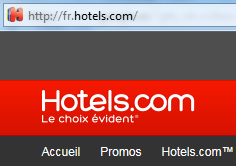LANGUAGE:
- WHAT WE DO
- AI

- Industries

Content Services
- Technical Writing
- Training & eLearning
- Financial Reports
- Digital Marketing
- SEO & Content Optimization
Translation Services
- Video Localization
- Software Localization
- Website Localization
- Translation for Regulated Companies
- Interpretation
- Instant Interpreter
- Live Events
- Language Quality Services
Testing Services
- Functional QA & Testing
- Compatibility Testing
- Interoperability Testing
- Performance Testing
- Accessibility Testing
- UX/CX Testing
Solutions
- Translation Service Models
- Machine Translation
- Smart Onboarding™
- Aurora AI Studio™
Our Knowledge Hubs
- Positive Patient Outcomes
- Modern Clinical Trial Solutions
- Future of Localization
- Innovation to Immunity
- COVID-19 Resource Center
- Disruption Series
- Patient Engagement
- Lionbridge Insights
Life Sciences
- Pharmaceutical
- Clinical
- Regulatory
- Post-Approval
- Corporate
- Medical Devices
- Validation and Clinical
- Regulatory
- Post-Authorization
- Corporate
Banking & Finance
Retail
Luxury
E-Commerce
Games
Automotive
Consumer Packaged Goods
Technology
Industrial Manufacturing
Legal Services
Travel & Hospitality
SELECT LANGUAGE:
When you first start planning for website translation, you probably think about your target markets, selected languages for translation, and the range of content types that need translating. But what about your URL structure? As a foundational element of website translation and global search engine optimization (SEO), you'll want to determine your multilingual URL structure strategy early on in the process.
After all, both users and search engines make assumptions about your website and your brand based on the structure and format of your URLs. And the approach you take will most likely be replicated across all markets, so you need to consider the languages you're planning to translate into in the short term plus the languages you plan to support in 2 to 3 years' time.
Contact our experts to learn more about the different options to optimize your multilingual website.
In the interest of brevity, this article focuses on Google — the preferred search engine for 80% of the globe. For countries where Google is not the preferred search engine — such as China (Baidu), Japan (Yahoo), Korea (Naver), or Russia (Yandex) — ensure your globalization partner has the expertise to tailor your approach for these international search engines so you receive optimal results across all target markets.
Multilingual Website URL Structure
There are three commonly used approaches to creating multilingual URL/domain structures:
Country-Code Top-level Domain (ccTLD)
www.mywebsite.es
Subdomain
es.mywebsite.com
Subdirectory
www.mywebsite.com/es/
A fourth approach is to use query strings to determine the language and country.
For example, this Google Support article includes the parameter ?hl=en to indicate English, while ?hl=de will lead to the German version of the article.
https://support.google.com/webmasters/answer/40349?hl=en
https://support.google.com/webmasters/answer/40349?hl=de
Let's look at the advantages and disadvantages of ccTLDs/gTLDs, subdomains, and subdirectories approaches based on:
- Local brand impact
- SEO benefits
- Set-up & maintenance
- Cost
- Hosting and content delivery networks
Let's start with a quick overview of each approach.
Generic Top-Level Domain Names (gTLD)
A generic top-level domain name (gTLD) is not tied to a specific country, but rather is associated with a particular domain class, including original (and highly desirable) TLDs like .com for commercial businesses, .org for non-profit organizations, and .edu for educational institutions.
Typically three or more characters, hundreds of new gTLDs (like .shop, .biz and .info) have been added in recent years.
Country-Code Top-Level Domain Names (ccTLD)
![]()
Considered by most to be the best option for localized websites, country-code top level domain names, or ccTLDs, are tied to a specific country (for example .de for Germany, or .cn for China).
According to Google, a ccTLD provides the strongest signal for site visitors and search engines that a website is targeting a specific country, plus provides some level of SEO benefit for that market. And research shows that in many countries, users are more likely to make a purchase from a website using the ccTLD.
One drawback: Even if they are available, ccTLDs must be purchased and maintained in each market. The ccTLD approach is the best option when a big company has the resources to invest. Amazon, for example, goes so far as to integrate the country code into their logo for each market.
Subdomains

A subdomain is an addition to your main domain name that helps organize and navigate to different sections of your website. For example, if your top level domain is product.com, your site for German would be located at the subdomain de.product.com.
You can create multiple subdomains or child domains on your main domain, and their simple and visually appealing URL structure provides a quick and easy solution for targeting a particular country or language.
Subdirectories

The most commonly used technique for creating multilingual websites, a subdirectory (or subfolder) is a part of the URL that points to a specific subset of content. In a multilingual site, each language is a subdirectory of your site, and individual directories are located to the right of the domain. For example, www.examplesite.com/de-de targets German speakers in Germany, while www.examplesite.com/fr targets all French speakers.
Pros and Cons of Multilingual URL Approaches
Now let's take a high-level look at the implications of each URL approach for our criteria: local brand relevance, SEO, set-up & maintenance, and cost.
Impact on Local Brand Relevance
ccTLD:
- Delivers high impact and builds trust
Subdomain:
- Delivers medium impact and instills some trust
Subdirectory:
- Delivers little impact or trust unless brand is well known in the market
SEO Influence
ccTLD:
- Indicates to users and search engines that the website is targeted to a specific country
- Easily tracked in most web analytics tools
- Each website can be hosted in country to further improve multilingual SEO
- No benefits from other language sites since each stands alone
Subdomain:
- Indicates to users that the website is targeted to a specific country; search engines require Search Console geotargeting
- Easily tracked in most web analytics tools
- Each website can be hosted in country to further improve SEO
- Limited benefits passed to each website from the popularity of the root domain
Subdirectory:
- Indicates little to users about targeting; search engines require Search Console geotargeting
- Challenging to track in most web analytics tools
- All sites hosted on the same server, hindering SEO improvements
- Domain popularity benefits all language sites
Set-Up and Maintenance Effects
ccTLD:
- Complicated to deploy
- Requires that all domains are available
- May require a different registration process in each country and individual set-up and maintenance of each site
Subdomain:
- Relatively easy to deploy Search Console geotargeting
Subdirectory:
- Easiest to deploy
- Limited additional setup or maintenance fees
- Requires maintaining a separate directory for each language
Cost Implications
ccTLD:
- Expensive
- Each domain may require separate registration, set-up, and maintenance costs
- May involve physical presence or other requirements
Subdomain:
- Moderate
- Requires purchase of one top-level domain unless using existing TLD
- Costs increase if each subdomain is hosted in a separate market
Subdirectory:
- Inexpensive
- Requires purchase of one top-level domain
Hosting and Content Delivery Networks (CDN)
One other key consideration is hosting your website and the use of content delivery networks (CDNs). The popularity of CDNs has grown significantly over the past number of years as users demand faster access to online content, and in regions with less developed infrastructure and slower internet access.
Although nobody knows the exact details of how search engines rank websites, we know Google can penalize websites for slower delivery speeds. And there's no shortage of evidence to show that better user experience results in lower bounce rates, more page views, and greater conversions. As Google's focus on user experience increases, the importance of in-country hosting and CDNs will also increase.
What do the Best Websites Do?
John Yunker of ByteLevel Research, an industry analyst, produces an annual report listing the world's best global websites. We looked at the top 10 websites from his 2022 Web Globalization Report Card to see which multilingual URL structures are used:
What does this table tell us? You can see that these organizations use a variety of best practices for URL structure, but the ccTLD approach is the most common amongst the top 5 global websites. This makes sense, though, because these are large organizations with the ability to invest in a resource-heavy option. However, the subdirectory approach is probably the most common on the web. This is likely because many companies are working with smaller, tighter budgets.
Choosing a URL structure for global websites doesn't have to be vexing. Use this background and side-by-side comparison to determine the most appropriate multilingual website URL structure for your brand strategy and your budget.
Get in Touch
Looking for efficient, customized solutions for your multi-language website? Talk to the pros at Lionbridge.

